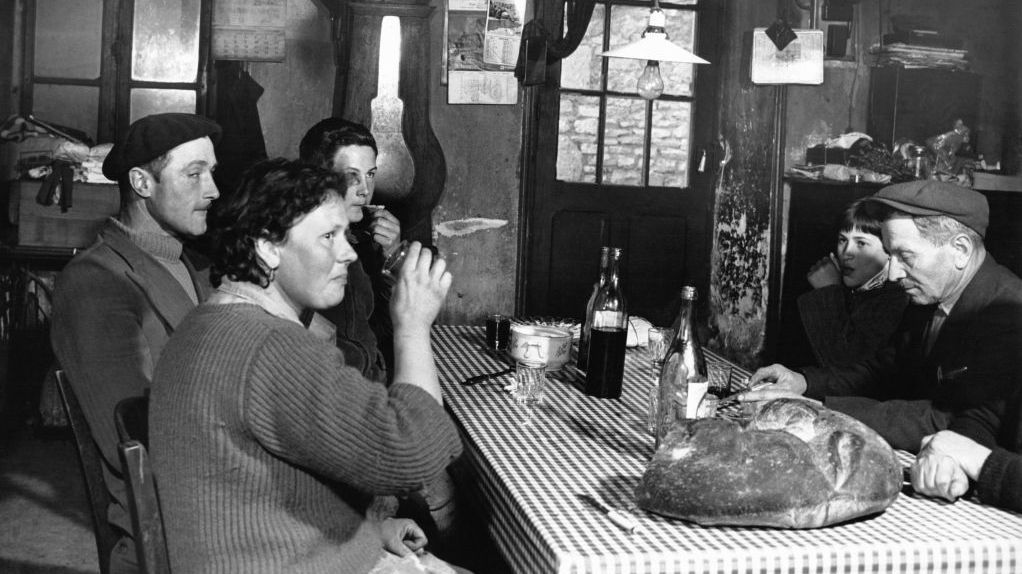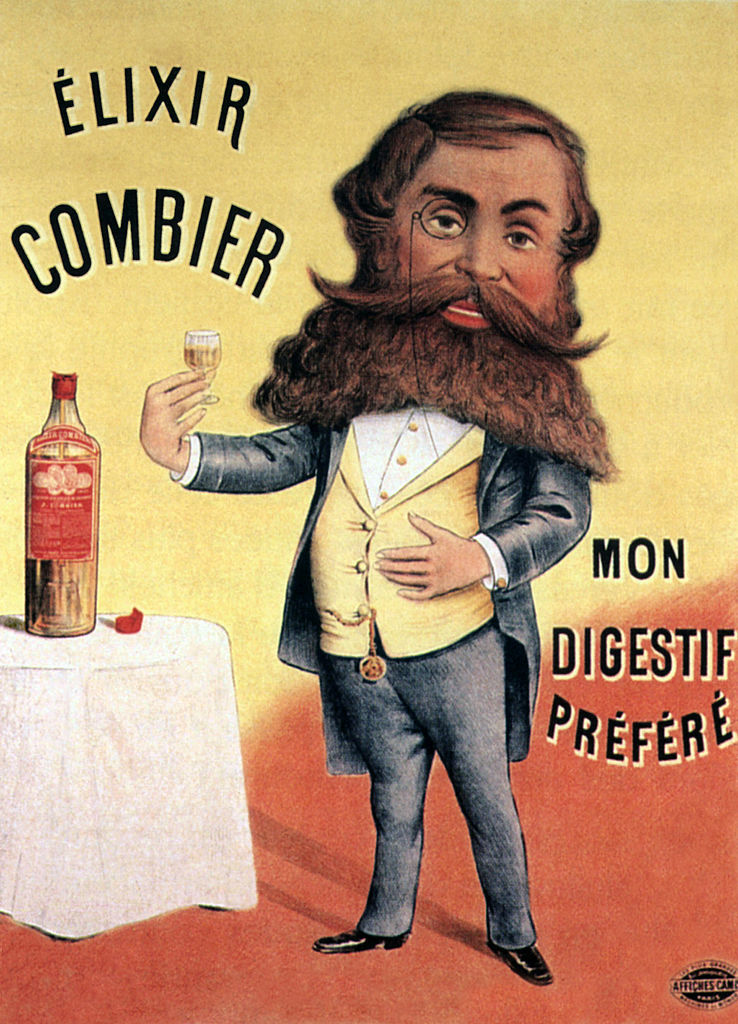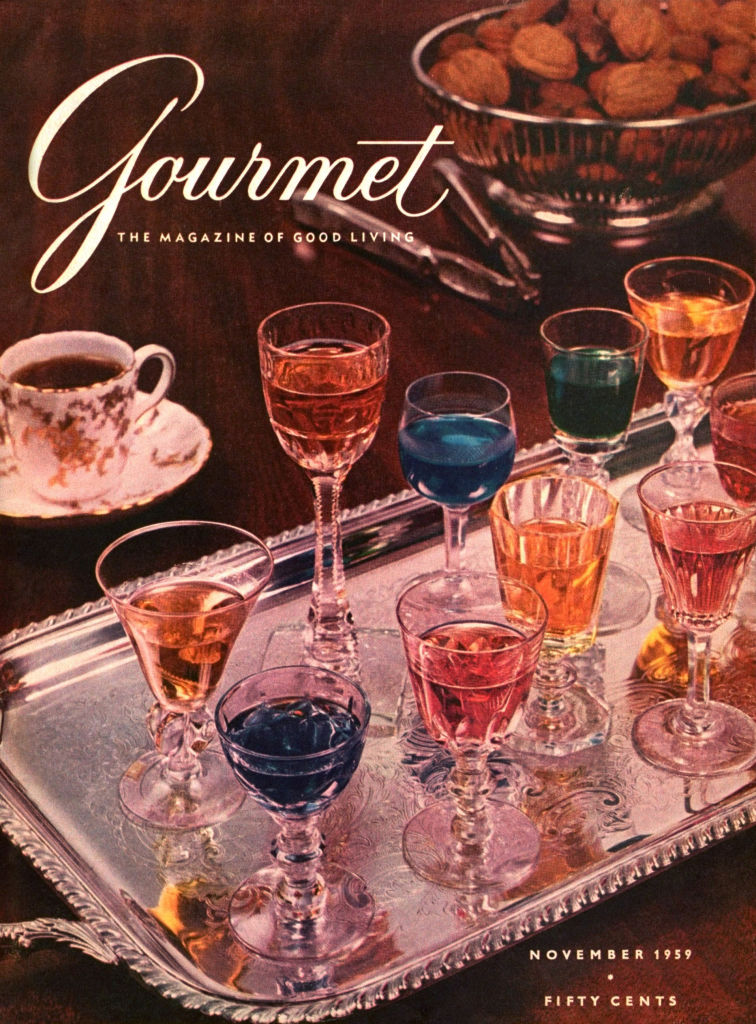Feeling Overstuffed After Your Holiday Meal? Try A Digestif
For centuries, people have relied on sipping boozy digestifs to settle their stomachs after big sugary, fatty, and carb-rich meals, and, coronavirus aside, why should the 2020 holiday season be any different?
Digestifs are a collection of after-dinner spirits that have a long tradition in Europe, says Anthony Caporale, director of spirits education at the Institute of Culinary Education in New York City. "The basic definition of a digestif or digestivo, depending on whether you're in France or Italy, is generally spirits that are flavored and sweetened. [They're] what we also call cordials or liqueurs here in the States."
As well as a class of spirit, digestifs also refer to a course at the end of a meal. Sipping digestifs gives you a chance to linger at the dinner table, Caporale says. "It extends the conviviality and the communality of the meal."
Digestifs are sometimes confused with aperitifs, likely because some of the same spirits can fall into both categories. The difference, Caporale explains, is that aperitifs come before the meal, and digestifs are served after.
Though there's little scientific evidence that digestifs actually aid in digestion, experts say there's no harm in giving them a shot. Depending on when you drink them and how the alcohol is absorbed, the spirits could make you feel a little less full after a big holiday feast.
What exactly is a digestif?
There are no specific rules on what kind of wine, spirit, or other alcohol actually defines a digestif, says Todd Johnston, beverage director at Marsh House in Nashville.
"Historically it is something that is made with herbs, spices, roots, barks, or botanicals that have natural properties that help with digestion," he explains. "Personally, I feel that it is something that has the potential to settle the meal, whether that is physically or mentally, a nice ending."
Digestifs can include fortified wines such as sherry or vermouth, aged liquors like brandy or whiskey, or herbal, bitter or sweet liqueurs, such as Fernet-Branca, amaro, or limoncello.
The flavors of digestifs tend to be warmer and richer, Johnston says, often combining bitter, savory, and sweet tastes, "However, I think the category can be translated loosely and be many different flavors and profiles."
Since they're served post-meal, Caporale says, people gravitate to sweeter digestifs, including limoncello, orange-flavored Grand Marnier, hazelnut-flavored Frangelico, or even Baileys Irish Cream. Digestifs are typically served straight in small quantities of two ounces or less.
"So, you're getting that alcohol, you're getting that little bit of sweetness," he explains, "but you're not putting a lot more volume in your stomach."
Can they really make you feel less full?
Scientific research on digestifs and digestion is scarce. One study published in 2008 in The Journal of Gastrointestinal and Liver Disease found consuming an alcoholic digestif after a meal had little effect on digestion.
Still, it's possible the spirits could make you feel less full, says Ginger Hultin, a Seattle-based registered dietitian nutritionist, spokesperson for the Academy of Nutrition and Dietetics, and owner of ChampagneNutrition.
"They are typically higher in alcohol than aperitifs, designed to prepare the stomach for digestion and may have a different flavor profile," she explains. "Some are more bitter, some are more sweet, some have herbal ingredients and others are liquor on its own, so how it works for an individual likely depends on what they've eaten, how they digest food, what kind of digestif they drink, and how much."
More alcohol is absorbed by the small intestines than the stomach, and absorption is quickest when you haven't eaten. When your body senses alcohol, it craves food to keep the alcohol from being absorbed too quickly, Caporale explains, "And, that's why you get the munchies." Alcohol can also cause your blood sugar to dip, Hultin adds, and that also makes you want to eat.
So drinking a digestif after a meal might make you feel hungry again, even if you're already stuffed. "If you're full and you ingest alcohol, your stomach's going to send a signal to your brain and say, 'Eat a little bit more,'" Caporale says, "And, that's going to make you feel less full."
Digestifs tend to have a higher alcohol by volume (ABV), so Hultin suggests limiting the quantity and enjoying them right after your meal.
What’s the best way to drink digestifs?
There's really no right or wrong way to drink a digestif, though Johnston says, "Depending on what the digestif is, there may be more suggested or common ways to drink them."
Traditionally, digestifs are enjoyed straight, since the idea is to settle your stomach, not add more to it. Johnston says straight is how he enjoys amaro, the Italian herbal liqueur, which he counts as one of his favorite digestifs.
Digestifs also tend to be served in smaller glasses. Around the holidays, Caporale says he enjoys digestifs with a spice component, such as sweet vermouth: "You can serve that at room temperature. A two-ounce serving in a little sherry glass makes a beautiful digestif."
The holidays and digestifs go hand in hand. "A lot of [digestifs] contain herbal liqueurs and flavors that are comforting and cozy," Hultin says.
Sipping digestifs around the holidays may also be a family tradition. If that's the case, keeping up those traditions is more important than ever this year, when gatherings likely aren't possible. Or maybe 2020 is the time to start a new tradition?
Virtual happy hours or other celebrations have been popular during quarantine, and Caporale says hosting a virtual digestif course could create a sense of togetherness when family and friends can't physically gather.
"People can be drinking the same thing 1,500 miles away at the same time and having that same shared experience," he adds. "I think that's so important, especially today."


